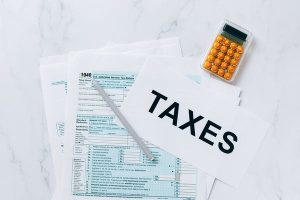HMRC SEISS Grant – Complete Guide
Table of Contents
The Self Employment Income Support Scheme (SEISS) has shut. The last date for making a case was 30 September 2021.
On this page we give an outline of every one of the five SEISS awards with connections to HMRC’s direction and factsheets, and the regulation supporting the plan.
You expected to consider whether your business had been unfavorably (adversely) impacted before you applied for a SEISS award. You needed to affirm that your business had been unfavorably impacted as a feature of the case interaction.
When are the awards available (in which charge year)?
The awards are available in the fiscal year they are gotten.
This implies that the initial three awards are available in the fiscal year 2020/21. They ought to be accounted for in full on your 2020/21 self-appraisal government form. Explicit boxes are given on the structure to them. You should utilize the particular boxes gave. Try not to report your grant(s) in some other box(es). No piece of the awards ought to be accounted for on your assessment form for the fiscal year 2019/20.
The fourth and fifth awards are available in the fiscal year 2021/22 and ought to be accounted for on your 2021/22 self-appraisal return at the appropriate time.

Your business might have been unfavorably impacted for various reasons.
These incorporate in the event that you had not had the option to work for timeframes because of holing up, safeguarding or as an outcome of caring liabilities brought about by Covid, or
on the off chance that your business needed to briefly shut or downsize because of lockdown, making your work environment ‘Coronavirus secure’, staff deficiencies, or an absence of clients.
The facts may confirm that your business was antagonistically impacted before on in the Covid episode however at that point your exchanging designs continued as should be expected, so despite the fact that you guaranteed SEISS 1 and SEISS 2 you probably won’t have been qualified to guarantee any further awards in the event that you were not generally unfavorably impacted.
Note that for SEISS 3, SEISS 4 and SEISS 5, there were extra standards to be met. Antagonistically impacted organizations should have:
experienced decreased movement, limit or interest; and
sensibly accepted that they would have experienced a huge decrease in exchanging benefits.
For this test, it was not adequate to have been unfavorably impacted simply by having inflated costs, like consumption on private defensive gear (PPE).
On the off chance that you had at least two exchanges, it was just fundamental for one of your exchanges to be antagonistically impacted. Your award installment was determined utilizing your benefits from all exchanges added together, regardless of whether only one of them had been unfavorably impacted.
If there should be an occurrence of an enquiry by HMRC sometime in the future, it is vital to keep business records to show how your business has been impacted by Covid and that you were qualified to make a case.
What does decreased movement, limit or request mean?
This implies, for instance, that:
you did less work because of store network interruptions (decreased action); or
you were briefly incapable to exchange – for instance, on the grounds that your business needed to close, you tried positive for Covid and you couldn’t work, or you were unable to work due to parental caring liabilities (decreased limit); or you had less clients or clients than you would regularly have anticipated (diminished request).
Nonetheless, you were unable to make a case for SEISS 3, SEISS 4 or SEISS 5, in the event that your decreased movement, limit or request was exclusively because of isolating in the wake of heading out to the United Kingdom from abroad.
Note that having inflated costs – for instance, the acquisition of individual defensive gear (PPE) – doesn’t, without help from anyone else, imply that you had diminished action, limit or interest. There probably been some effect on how much work you had, or on your capacity to complete that work, to qualify.
You can track down additional models on GOV.UK.
How might huge decrease and important premise periods affect the third, fourth and fifth awards?
Huge decrease
For SEISS 3, SEISS 4 and SEISS 5 there was no necessity for exchanging benefits to be decreased by a specific fixed sum or rate, however the decrease must be ‘huge’. HMRC said you expected to consider your individual and more extensive business conditions while making this evaluation.

The decrease should likewise have been because of the diminished movement, limit or interest (see above) endured by the business.
Any pay got from COVID-19 help plans, for example, SEISS 1 and SEISS 2 and the independent company awards shouldn’t have been incorporated while thinking about whether your exchanging benefits have been altogether decreased.
Applicable premise periods
A premise period is generally a year. A ‘important premise period’ is a premise period for your business which covered with:
- the period 1 November 2020 to 29 January 2021 for SEISS 3
- the period 1 February 2021 to 30 April 2021 for SEISS 4
- the period 1 May 2021 and 30 September 2021 for SEISS 5.
Thus, for the SEISS 3 assuming that your premise period finished in the period 1 November 2020 to 29 January 2021 (for instance, your premise period finished on 31 December 2020), then, at that point, you will have two applicable premise periods. You expected to consider whether you had a huge decrease in exchanging benefits over the entire of something like one premise period, in addition to the period from 1 November 2020 to 29 January 2021.
Notwithstanding, as numerous independently employed organizations have a bookkeeping year finishing on 31 March or 5 April then all of their premise period finished 31 March 2021 or 5 April 2021 fell under the SEISS 3 award period and you would have to consider the impact on your business for the period 1 November 2020 to 29 January 2021.
For SEISS 4, on the off chance that your premise period finished on 31 March 2021, your important premise periods are:
- The premise time frame finished 31 March 2021; and
- The premise time frame starting 1 April 2021.
For this situation, you simply had to have had a sensible conviction that you would have a huge decrease of exchanging benefits one of the two time frames.
What’s more, for SEISS 5, assuming your premise period finished in the period 1 May 2021 to 30 September 2021, then, at that point, you will have two pertinent premise periods. For instance, your premise period finished on 30 June 2021, your significant premise periods are:
- The premise time frame finished 30 June 2021; and
- The premise time frame starting 1 July 2021.
Once more, for this situation, you simply had to have had a sensible conviction that you would have a huge decrease of exchanging benefits one of the two time frames.
What was the Financial Impact Declaration (FID) test for the fifth award (looking at your turnover)?
The FID was utilized for some fifth award (SEISS 5) petitioners just to see what level of award they were qualified for.
On the off chance that you began your independent work or turned into an accomplice in an organization in 2019/20 and had not been independently employed or in that frame of mind in any of the 2016/17, 2017/18 and 2018/19 fiscal years, then you didn’t need to finish the FID and consequently got the fifth award determined utilizing 80% of three-twelfths of the benefits displayed on your 2019/20 government form.
In this way, in the event that you began independent work without precedent for 2019/20, your exchanging benefits will be isolated by 12 (regardless of when you began exchanging) and afterward duplicated by 3 and afterward 80%. The figure is covered at £7,500. This is same as SEISS 4.
On the off chance that you have been independently employed or an accomplice in an organization whenever during the 2016/17 to 2018/19 fiscal years you probably finished the FID test, regardless of whether you stopped being independently employed (or being an accomplice) during this time and afterward began another business during 2019/20.
The FID test was an examination between turnover in the pandemic period and a reference period. We make sense of what these terms in strong mean beneath.
The level of the fifth award relied on how much your turnover had been diminished.
On the off chance that the FID test shows turnover has decreased by no less than 30%, the award you can guarantee will be 80% of three-twelfths of your typical benefits displayed on your government forms, covered at an all out limit of £7,500.
In the event that the FID test shows turnover has decreased by under 30%, the award you can guarantee will be 30% of three-twelfths of your typical benefits displayed on your government forms, covered at an all out limit of £2,850.
On the off chance that your turnover had expanded in the pandemic period contrasted and the reference period, it was as yet conceivable to guarantee the fifth award as long as you met all the qualification conditions made sense of in the table above. In particular, note that you would have to sensibly accept that your exchanging benefits will be essentially decreased.
There is additionally data on the FID test on GOV.UK.
What is turnover?
Turnover incorporates the takings, charges, deals and cash acquired or got by the business (excluding VAT assuming you are VAT enrolled). It is determined utilizing the accumulations premise or the money premise.
You shouldn’t have incorporated any Covid business support awards, for example, SEISS concedes or Eat Out to Help Out while ascertaining your turnover for the pandemic or reference periods.
On the off chance that you are independently employed, turnover ought to be the sum you would remember for either box 9 (independent work valuable short pages) or box 15 (independent work strengthening full pages) while finishing your Self Assessment government form.
On the off chance that you are in an organization, see our direction beneath.
What is the pandemic time frame?

In the event that you needed to finish the FID, to guarantee SEISS 5 you needed to give the turnover figures to the pandemic time frame as a component of the case cycle. The pandemic time frame is a year term which can begin from any date between and including 1 April 2020 to 6 April 2020.
For instance, Mason is independently employed and readies his records to 5 April. The easiest dates for him to have decided for the pandemic time frame were from 6 April 2020 to 5 April 2021 and that ought to connect to the data he is utilizing to set up his Self Assessment government form.
Finding this data for the FID test will most likely be least demanding for organizations with a premise period finishing on 31 March or 5 April as they will require this figure for their 2020/21 expense form.
Assuming you had a premise period which is either not a year or didn’t start with a date from 1 April 2020 to 6 April 2020, then, at that point, you would have needed to have picked a date between 1 April 2020 and 6 April 2020 then determined your turnover for the year time frame starting with that date.
What is the reference time frame?
The reference time frame is the turnover from by the same token:
The 2019/20 fiscal year – which would it be a good idea for you have had the option to get from your submitted expense form; or
The submitted 2018/19 expense form, assuming you sensibly accepted that the 2018/19 fiscal year all the more precisely mirrored the standard turnover of the business in a regular year time frame. For instance, in the event that you were on maternity leave during the 2019/20 fiscal year you might have considered the turnover from your 2018/19 government form to be a more precise impression.
Conclusion
In the above information we have provided brief about seiss grant hope this information has helped you.



